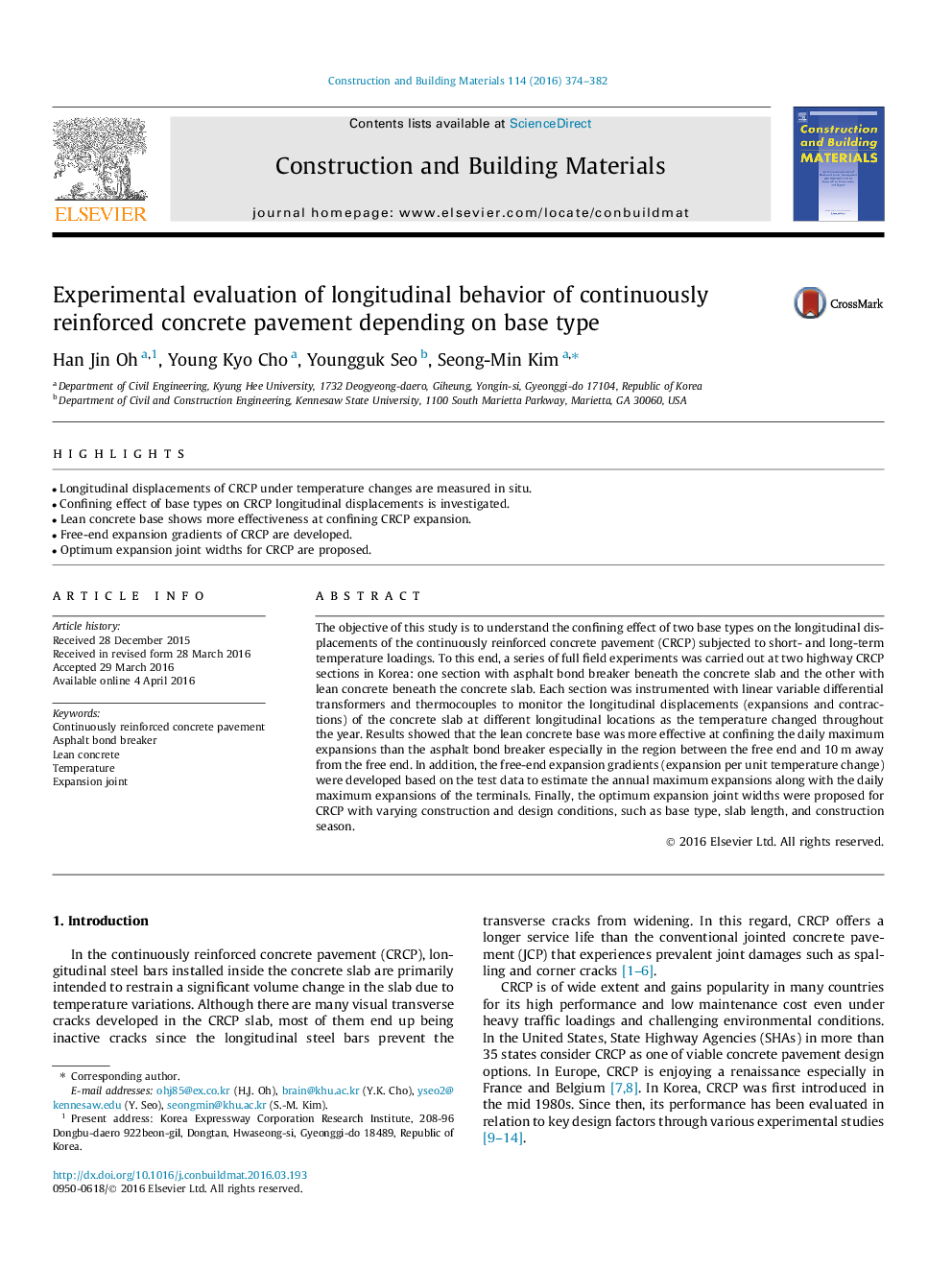| Article ID | Journal | Published Year | Pages | File Type |
|---|---|---|---|---|
| 255992 | Construction and Building Materials | 2016 | 9 Pages |
•Longitudinal displacements of CRCP under temperature changes are measured in situ.•Confining effect of base types on CRCP longitudinal displacements is investigated.•Lean concrete base shows more effectiveness at confining CRCP expansion.•Free-end expansion gradients of CRCP are developed.•Optimum expansion joint widths for CRCP are proposed.
The objective of this study is to understand the confining effect of two base types on the longitudinal displacements of the continuously reinforced concrete pavement (CRCP) subjected to short- and long-term temperature loadings. To this end, a series of full field experiments was carried out at two highway CRCP sections in Korea: one section with asphalt bond breaker beneath the concrete slab and the other with lean concrete beneath the concrete slab. Each section was instrumented with linear variable differential transformers and thermocouples to monitor the longitudinal displacements (expansions and contractions) of the concrete slab at different longitudinal locations as the temperature changed throughout the year. Results showed that the lean concrete base was more effective at confining the daily maximum expansions than the asphalt bond breaker especially in the region between the free end and 10 m away from the free end. In addition, the free-end expansion gradients (expansion per unit temperature change) were developed based on the test data to estimate the annual maximum expansions along with the daily maximum expansions of the terminals. Finally, the optimum expansion joint widths were proposed for CRCP with varying construction and design conditions, such as base type, slab length, and construction season.
